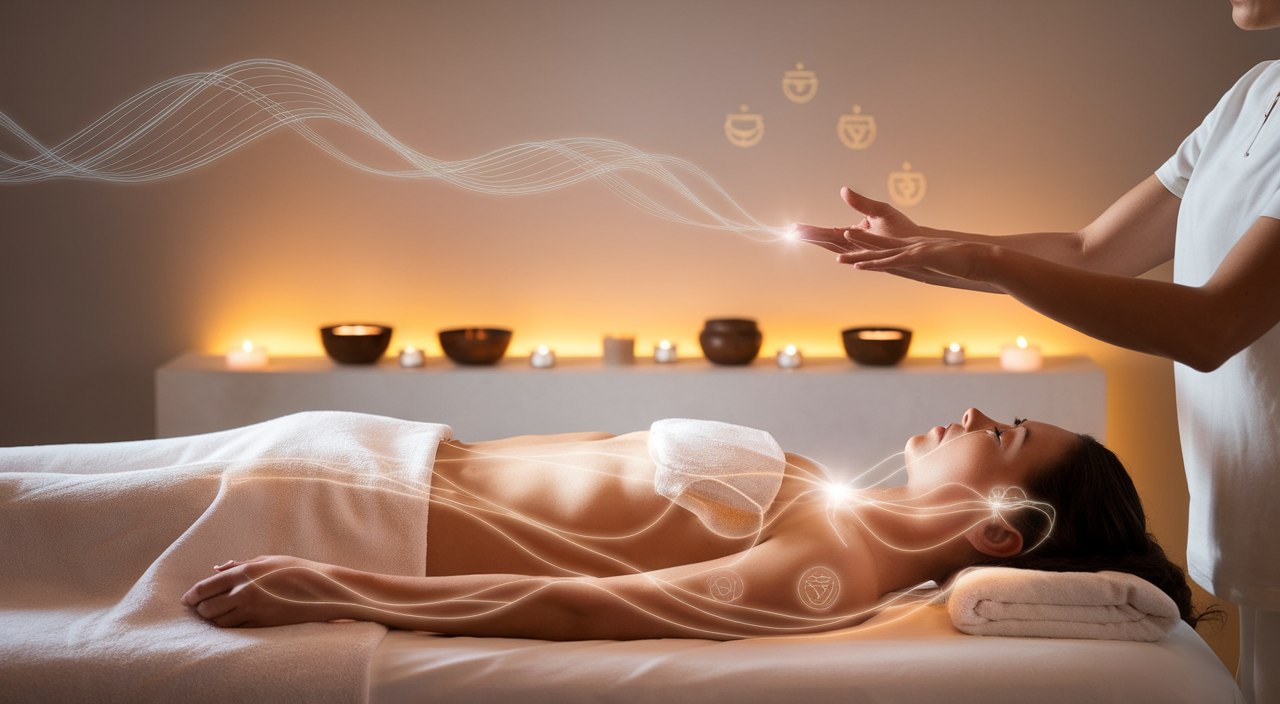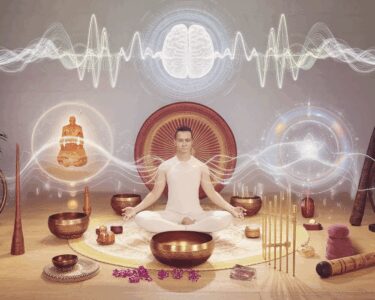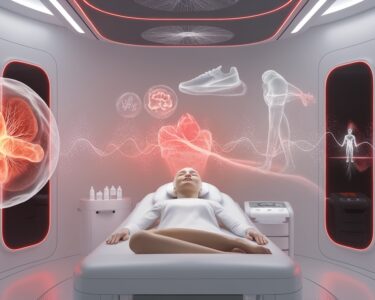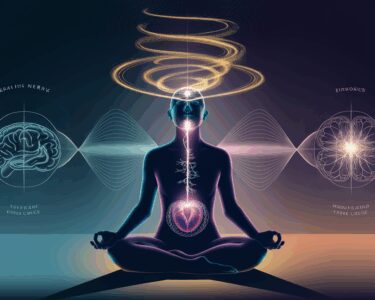How Reiki Healing Works: Reiki healing channels universal life energy through the practitioner to restore balance in the recipient’s energy pathways, similar to Chi in Chinese medicine or Prana in Ayurvedic practices. Mikao Usui developed this non-invasive healing method in 1922. It operates on the belief that blocked energy creates physical and emotional issues, allowing practitioners to direct healing energy to areas in need without physical manipulation.
Key Takeaways
- Reiki practitioners serve as channels for universal life force energy, directing it to areas of the body needing healing through specific hand positions over energy centers.
- During a 30–90 minute session, recipients remain fully clothed while practitioners either lightly touch or hold their hands above the body, often resulting in sensations of warmth, tingling, or deep relaxation.
- Despite mixed scientific evidence, many hospitals and hospice centers now include Reiki as a complementary therapy alongside conventional medical treatments.
- The practice follows a structured training system with three levels: self-healing (Level I), distance healing (Level II), and the ability to teach and attune others (Master/Teacher Level).
- Recipients commonly report benefits including decreased stress and anxiety levels, improved sleep quality, and enhanced overall relaxation.
The Science Behind Universal Life Energy
Understanding How Reiki Healing Works Through Energy Channels
At its core, Reiki healing works through the concept of ‘Ki’ — a fundamental life force energy that Japanese healing traditions say flows through every living being. This isn’t a standalone concept — it’s mirrored across various ancient healing systems. I’ve found fascinating parallels between Ki and other traditional energy concepts like Chi in Chinese medicine and Prana in Ayurvedic practices.
The underlying principle of how Reiki healing works centers on these invisible energy pathways in our bodies. Just as sound therapy works to balance energy, Reiki practitioners channel universal life force through specific routes, similar to the meridians used in acupuncture or the nadis described in yoga practices.
The Origins and Modern Understanding of How Reiki Healing Works
Mikao Usui developed this healing art in 1922, combining two powerful concepts: ‘Rei’ (universal/higher power) and ‘Ki’ (life force energy). While contemporary scientific instruments haven’t yet developed ways to measure this energy directly, I’ve seen how Reiki healing works through its effects on people’s well-being.
Here’s what makes Reiki unique as a healing practice:
- It operates on the principle that energy blockages can lead to physical and emotional issues
- The practitioner acts as a channel for universal life force energy
- No physical manipulation is required
- The energy naturally flows to areas needing healing
- Sessions can be performed hands-on or from a distance
Understanding how Reiki healing works requires looking beyond conventional scientific measurements. While we can’t yet quantify the life force energy itself, practitioners and recipients often report tangible benefits. The practice builds on the age-old understanding that energy flow and physical health are deeply connected, suggesting that maintaining clear energy pathways is crucial for overall wellness.
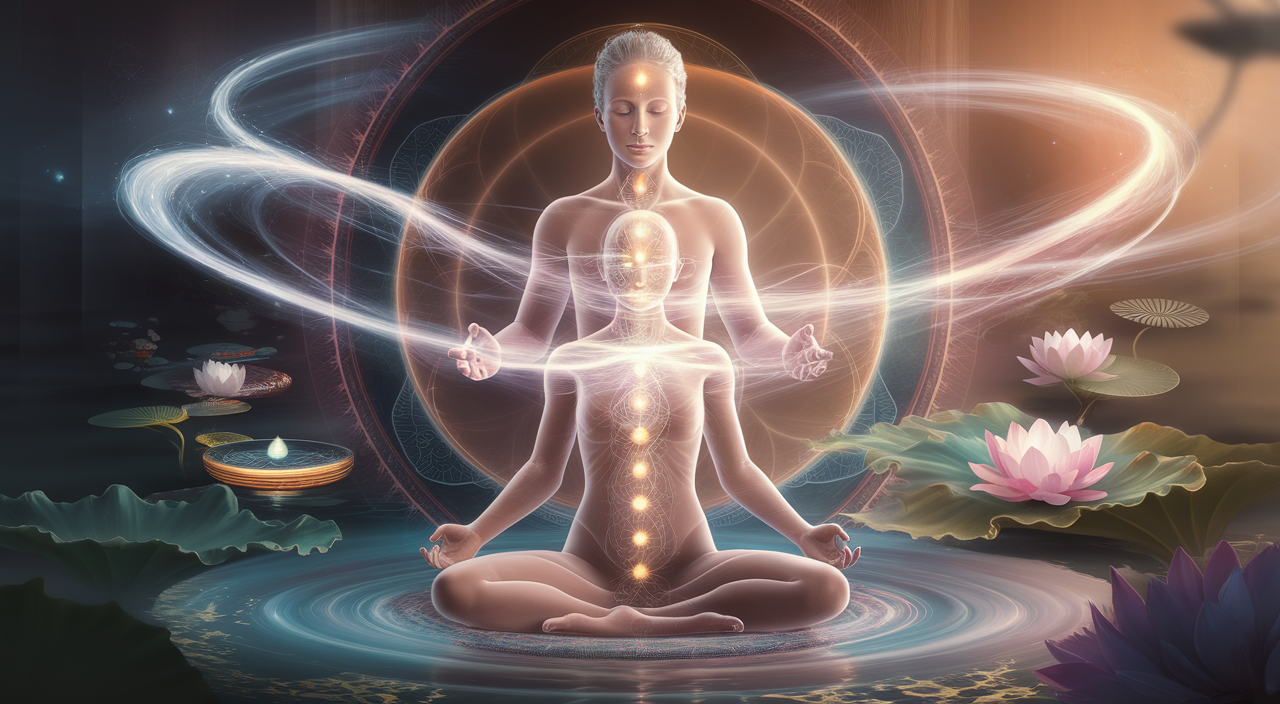
What Actually Happens During a Reiki Session
How Reiki Healing Works in Practice
During a typical Reiki session, I’ll guide you through a gentle healing experience lasting 30-90 minutes. You’ll stay fully clothed while lying comfortably on a massage table or sitting in a chair—whatever feels right for you. The environment is purposefully peaceful, with soft lighting and calming music to help you relax.
As a practitioner demonstrating how Reiki healing works, I’ll either place my hands lightly on your body or hold them slightly above, working with specific points connected to your major organs and energy centers (chakras). These positions include your head, shoulders, stomach area, legs, and feet. Unlike massage therapy, there’s no physical manipulation—Reiki is all about energy transfer.
Understanding How Reiki Healing Works with Your Body
I focus on channeling universal life energy through specific hand positions that target your body’s energy centers. Many of my clients experience different sensations during their sessions, including:
- Waves of warmth flowing through their body
- Gentle tingling sensations
- Deep states of relaxation
- A floating or drifting feeling
- Emotional release
Some practitioners enhance how Reiki healing works by incorporating additional elements like healing sound bowls or crystals, though these aren’t part of traditional Reiki practice. These tools can complement the core energy work while maintaining the session’s therapeutic benefits.
The effectiveness of Reiki is becoming increasingly recognized in medical settings. According to a hospital survey, 80% of patients reported decreased pain and anxiety levels after receiving Reiki therapy. This healing practice creates a deep state of relaxation while supporting your body’s natural ability to heal itself.
I act as a neutral channel for this healing energy, allowing it to flow where it’s needed most in your body. Each session is unique, adapting to your specific needs and energy levels at that moment. The practice stays true to its core principle: supporting your body’s innate healing abilities through focused energy work.

The Science and Clinical Usage of How Reiki Healing Works
Research Findings on How Reiki Healing Works
The National Center for Complementary and Integrative Health (NCCIH) has identified Reiki as a generally safe practice that shows promise in stress reduction. Understanding how Reiki healing works involves examining both physiological responses and clinical applications. Similar to sound therapy’s calming effects, Reiki appears to influence key body metrics like heart rate and blood pressure through its relaxation-inducing properties.
However, the scientific evidence presents mixed results. A 2017 review did not find significant benefits beyond placebo effects, while a 2019 review highlighted insufficient evidence for specific medical conditions. These findings often stem from research limitations, including small sample sizes and inadequate controls.
Clinical Applications and Training Levels
Many hospitals and hospices now include Reiki as a complementary therapy alongside conventional treatments. Here’s what you should know about how Reiki healing works in practice through its training levels:
- Level I: Focuses on self-healing and basic hand positions
- Level II: Introduces distance healing and advanced symbol usage
- Master/Teacher Level: Enables practitioners to attune others and teach Reiki
Recipients frequently report benefits like:
- Decreased stress levels
- Enhanced sleep quality
- Reduced anxiety
- Improved overall relaxation
The exact mechanism of how Reiki healing works through energy transfer remains scientifically unproven. Yet, its practical application continues to expand in medical settings, where it’s used to support — not replace — traditional medical care. Despite scientific uncertainty, consistent positive feedback from recipients has helped maintain Reiki’s place in integrative healthcare settings.
The practitioner certification process requires an attunement from a Reiki Master, ensuring proper training and understanding of the practice. This structured approach to training helps maintain standards in how Reiki healing works, even as research continues to explore its effectiveness.
During a session, practitioners use gentle touch or place their hands just above the body to channel energy and promote balance through the body’s natural energy fields, as described in this overview of energy healing techniques.
Sources:
National Center for Complementary and Integrative Health (NCCIH), “Reiki” informational page
McManus, D.E., “Reiki Is Better Than Placebo in Promoting Parasympathetic Response”
Thrane, S., Cohen, S.M., “Effect of Reiki therapy on pain and anxiety in adults: An in-depth literature review of randomized trials with effect size calculations”
Lee, M.S., Pittler, M.H., Ernst, E., “Effects of Reiki in clinical practice: a systematic review of randomised clinical trials”
Usui, Mikao; Frank Arjava Petter. “The Original Reiki Handbook of Dr. Mikao Usui”
Stein, Diane. “Essential Reiki: A Complete Guide to an Ancient Healing Art”



